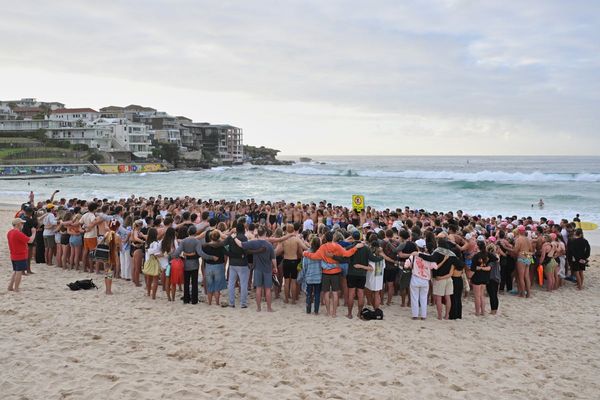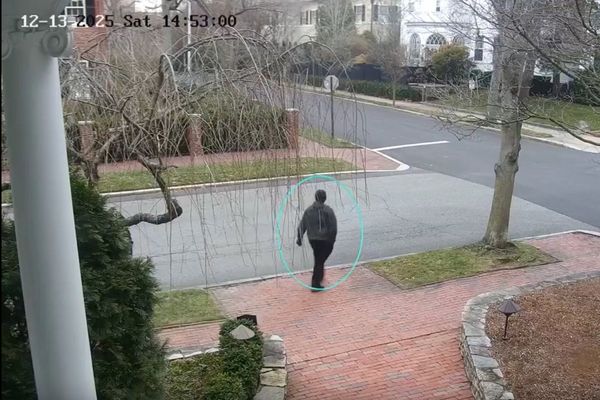
There is no better word to describe Des Linden’s 18-year professional career than consistent. No matter the race, weather, or competition, she always showed up with her best – and the results back it up. A two-time Olympian, winner of the 2018 Boston Marathon, and world record-holder in the 50k, Linden is one of America’s greatest ever distance runners. But like any good thing, her career can’t last for ever.
“This will be my last time racing Boston in the professional field,” Linden said a few weeks before this year’s race. Despite countless accolades, Linden wanted her final pro marathon to be about the competition, not a farewell tour that could get in the way of her goal of “leaving it all out there one last time.”
A few weeks before her final 26.2, Linden shared how her identity as a pro marathoner is evolving and what may come next – a process that is not easy or straightforward, especially if you’ve been defined by one job for nearly half your life.
“It’s time, it’s necessary. I want this to be my last Boston because I want to give it everything,” said Linden. “I want to get to the finish and be like, I suffered all day and never took the easy way out. The end point gives me extra motivation to do it right, to not make excuses or keep running to just cash a check. I feel satisfied, there’s nothing else to achieve.”
As to what comes next, Linden isn’t sure, but didn’t want attention on her future to distract from her goal, racing Boston to her best. To stay focused, she kept the news a secret until the morning of the race, sharing her retirement in a full page ad in the Boston Globe. This didn’t make stepping away any easier, though.
“Retiring is like having your favorite dog get near the end,” says Linden, “it’s hard to know when to make that call and how to do it with dignity, but I wouldn’t ask someone else to come in and tell me when to put my dog down, so I’m not going to ask anyone when I should stop my professional career.”
For Linden, retirement is part of a natural process. “It’s a universal human experience to have things come to an end,” Linden says “but to have had my big moment is incredible. That was really, really special. Some athletes get worried about who they will be once they’re done, but I think maybe not defining ourselves as our careers is a little more healthy.”
As a coffee and bourbon aficionado, podcast host, and New York Times bestselling author, Liden has her hands in many different pots already, so more dabbling seems likely. “Now I can say yes to more things. I’m a runner and always will be, but this step away from professional marathoning will give me more balance. Maybe I will try ultras next.”
Linden grew up in San Diego, playing soccer and softball with her older sister, Natalie. Her parents encouraged the pair to spend time outside and “not sit in front of the TV,” says Linden. Her first race was the Junior Carlsbad mile, which she finished before most of the boys, an early barometer for her potential.
“I beat a lot of kids who had singlets, shorts, and proper running shoes,” Linden laughed. “My dad sent me out there in sweat pants and I can’t even imagine what kind of shoes.”
Linden fell for running quickly, finding purpose and clarity racing the clock and competing for the podium. “Competition was what kept me in the sport for so long. I love testing myself against others and finding out how good I can be,” said Linden.
As a high school freshman she ran a sub-five minute mile and was a finalist at the California state meet all four years of high school. She went on to be a two time All-American at Arizona State University, showing potential despite never winning a conference or national championship. Acknowledging a risk of failure, Linden moved to Michigan to try her hand at a pro career.
Her first marathon was Boston in 2007, where she placed 19th. A year later she finished fifth at the Chicago Marathon and in 2009 set her personal best by three minutes at the World Championships. She kept improving, notching the top American at Chicago in 2010 before her major breakthrough in 2011, placing second overall by a heartbreaking two seconds at the Boston Marathon.
Linden’s consistent progression is easy to map looking backwards, but wasn’t her vision at the time. “The goal is results. Even though many professional athletes tell the outside world that it’s about the process, that’s a lie. I always wanted to win and so do most pros.”
Despite her fierce competitiveness, Linden is simultaneously as selfless as pros come. Her bestseller book, Choosing To Run, is dedicated to “everyone who’s brave enough to lace it up and take the first step,” emblematic of her core values. Instead of a biography that waxes poetic about her achievements, the book is an ode to first time runners.
“I think about these people a lot,” says Linden. “At this point it’s easy for me to go run because my life is built around running, but to take that first step is so brave. It’s hard and humbling and tough to be a beginner, but I know how great running can be.”
Marathoning stands out in that amateurs and pros run the same course on the same day, even if their experiences are quite different. While most amateurs work a full-time job, most pros focus on training and recovery. Being the best marathoner means sacrificing a lot, while resting for the next session.
“I don’t like the word sacrifice because it was an intentional choice for me,” says Linden. “In some ways it’s the most cushy job in the world, even if travel and social events are hard, but it’s all worth it when you’ve done everything you can and you didn’t leave anything on the table.”
Linden has run at the highest level for nearly two decades without letting outside noise drag her down, because of who she surrounds herself with.
“You’ll find lots of people who will tell you why you can’t, or little excuses so you don’t scrap for every second” says Linden. “If you want to reason, you don’t even have to self-sabotage, just ask somebody who doesn’t have your best interest in mind. I was more interested in what I could do. If I failed, at least I would know my limits.”
The Boston Marathon is different from the other six Majors due to its course and rules. It passes eight small towns on its way from Hopkinton to Copley Square in the center of Boston, with many of the roads dating back centuries. This brings athletes closer to the crowds, as they run over a series of rolling hills.
Also, pacers are not allowed, changing the style of the race. “You don’t train for 26.2, you train for Boston,” says Linden. “You have to be ready for any scenario. It’s less about splits and more about pure racing, with a crescendo as you get into the city and the greatest finishing stretch in the world.”
Linden has had her personal ups and downs at Boston, breaking through in 2011 only to scratch before the start in 2013 while recovering from a femur fracture, which forced her to consider early retirement. She refound a love for running and returned, before another low in 2017 when the first super shoes dominated the race.
“That crushed me in a really big way,” said Linden. “The shoes took away the core meaning of the sport, the competition. It was immediately clear how much they impacted the results.”
The next year, in freezing Nor’easter that forced many athletes to drop out, Linden won. “There have been so many incredible moments in racing history at Boston and I was lucky to put my name in that story. In a small way, I am a part of history,” said Linden.
Over the last seven years, the field has gotten deeper and winning times have dropped significantly, while Linden has moved from her prime into the masters division. “The last couple years I’ve lost the pack earlier than I would have liked and still run 2:29, but that’s not competing anymore. I’m not here to go through the motions, I’m here to compete.”
This year, Linden covered the first big move and stayed in touch with the lead pack longer, hitting the halfway mark at 1:11 and finishing in 2:26 – the fastest she had completed the course since 2017. With a gutsy last dance, Linden was the first master’s woman and 17th overall, a clear sign that even her best day wasn’t close to the podium. This was a best case scenario – leaving it all other there one last time, while leaving Linden confident she had made the right decision.
“I’m going to find the next thing. I want to push myself and if it’s not here, I need to figure out where.” Without all the answers, Linden is excited for the next chapter and the opportunity for “a second prime or a third prime.”
“I’m not choosing to stop running,” says Linden. “I’ll keep running and competing, but do it in new ways. Reinventing yourself and finding new challenges is a good thing. I’m choosing to redefine how I run.”







